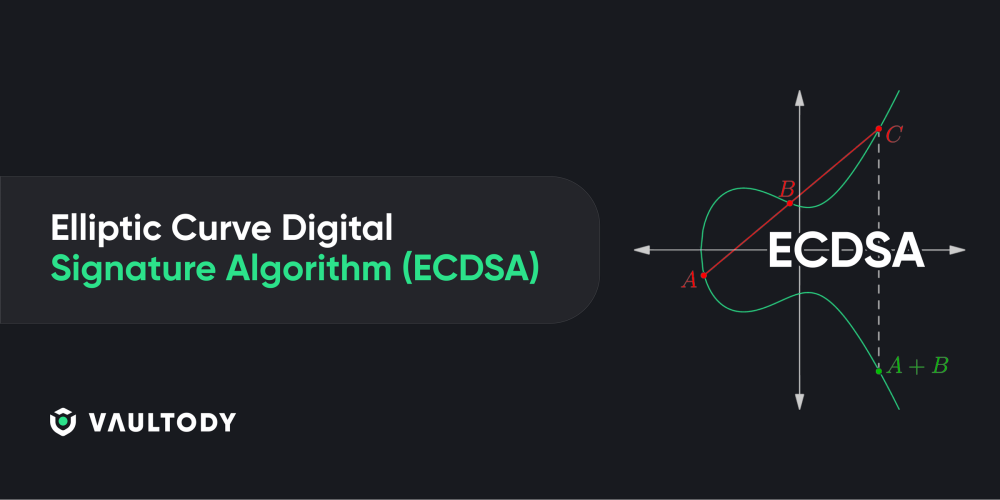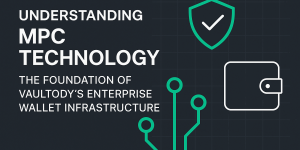Elliptic Curve Digital Signature Algorithm (ECDSA)

The Elliptic Curve Digital Signature Algorithm, widely known as ECDSA is a form of digital signature, based on cryptographic algorithms. It is used to ensure authenticity, integrity and non-repudiation of digital data. The ECDSA has different arrays of application within digital certificates, blockchain technology and as ways of securing communications.
ECDSA relies on elliptic curve cryptography for the generation of a pair of keys - one private key, and one public key which corresponds to the private one. The owner of the private key must keep the key safe from other parties.
As a private key owner, you are authorizied to sign transactions. When it comes to public keys, they can be shared with anyone - this action is often performed mainly for accounting purposes, reviewing balances/reviewing numbers and others.
The ECDSA key creation is all about complexity and all about maths. Although it is very straightforward to compute a key in one direction, it will not be possible to reverse the process. Focusing on the mathematical equations will not be the main focus of our discussion, but be aware that in the ECDSA there is a curve represented by (y2 = x3 + ax + b). What is making it very complex is the fact that a number on the curve is multiplied by another, which results in a new point on the curve. Even when knowing a particular number, finding the other is an impossible process.
Beating the ECDSA curve means solving the elliptical curve discrete logarithm problem. This is widely known as being n exceptionally difficult mathematical barrier to overcome, with a difficulty level nearing impossible.
ECDSA Algorithm Steps:
After creating your private and public key, the public key becomes a point on the elliptic curve.
Next step is signing - in an event in which a user would like to digitally sign a message or piece of data, the ECDSA algorithm takes the private key and the data as inputs, and produces a digital signature. The signature is a compact representation of the data's cryptographic hash encrypted with the private key.
Being on the receiving end, the verifier performs the next step, which is “verification”. The verifier must have access to the public key to verify that signatures match the provided data. If the signature is valid, it confirms that no changes have been made to data since it was signed. It also verifies that the owner of the private key was the one to sign, and the message's integrity and authenticity were confirmed.
Advantages & disadvantages of ECDSA
Vaultody`s solutions are incorporating the ECDSA technology, because of its key advantages across several different aspects that we are going to list below. We recognize the importance of securing data online, and the ECDSA algorithm enables digital signatures to secure that data. Here are the key advantages of this algorithm:
- Security - ECDSA provides a very high security level, making it challenging to crack the algorithm code. The algorithm is based on elliptic curve mathematics, which is robust and resistant to cryptographic attacks.
- Efficiency - The shorter signature keys that ECDSA produces can reduce loading speed without compromising security, and at the same time optimizes storage and reduces network overhead; faster processing is also attained.
- Wide adoption - It is used in various applications, including major cryptocurrencies such as Bitcoin and Ethereum. Online certificates for secure web browsing such as SSL and TLS certificates are utilizing it as well.
Disadvantages:
- Complex to work with - Excellent understanding of ECDSA elliptic curve mathematics and cryptographic protocols is an absolute must. Deployment and implementation of ECDSA are difficult and insecure or false implementations can open up opportunities for hackers.
- Random generation flaws - If the numbers which are randomly generated, are easy to predict or somehow compromised, this may potentially result in threats.
There are some considerations to keep in mind that may not be directly associated with ECDSA, but they are still important to address for the overall security of the system. One such aspect is the need for proper key management, which is crucial to maintain the integrity of the ECDSA algorithm. Ensuring the safety of keys is essential, as any compromise or loss could potentially undermine the effectiveness of ECDSA.
Additionally, we are aware of the potential future threat posed by quantum cryptography, even though it is still in its early stages of development and not specific to ECDSA. It's important to acknowledge this concern and stay vigilant about advancements in this area.
Moreover, it's worth noting that some specific curves used in ECDSA might be subject to patents, raising legal and licensing considerations. Addressing these issues is part of our commitment to providing a secure and reliable solution.
Despite these potential disadvantages, we want to assure our clients that we have taken extensive measures to minimize their impact or completely eliminate them through our sophisticated and unique solutions. Our MPC wallet is specifically designed to address the complexities of ECDSA and to alleviate any concerns about key security. With a range of features focused on privacy, security, and safety, our clients can trust Valtody to offer a secure and seamless experience at all times.




 Login
Login







 Copy link
Copy link